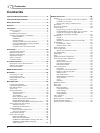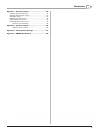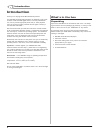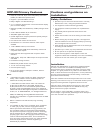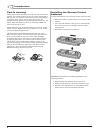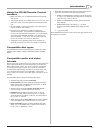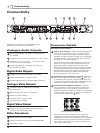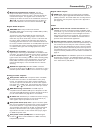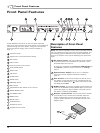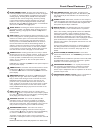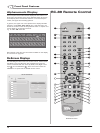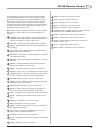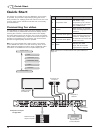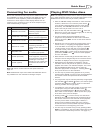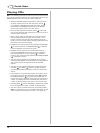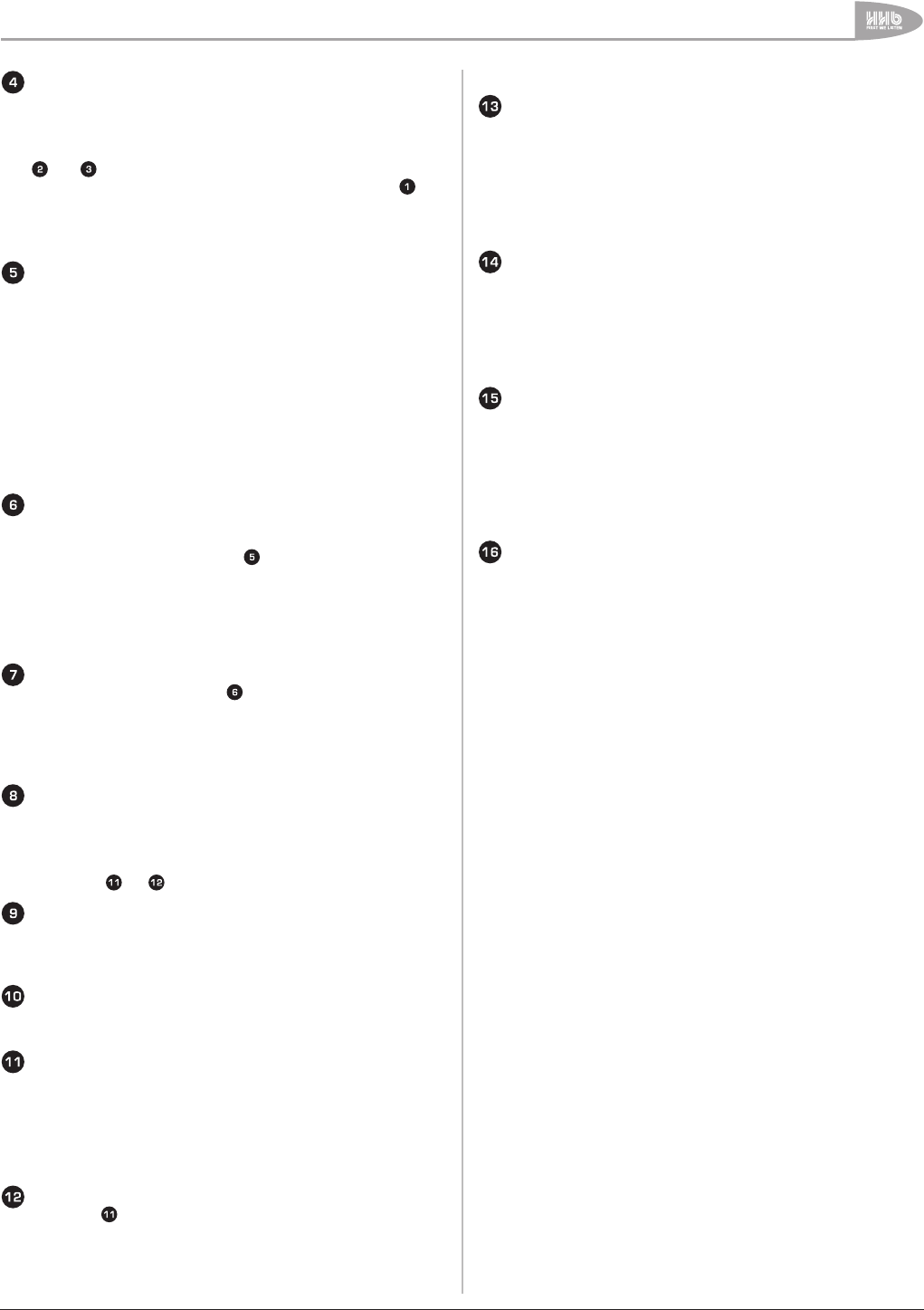
Connectivity
11
UDP-89 User Manual Version 2.0 www.hhb.co.uk
Balanced multichannel outputs. This is a
25-pin female Dsub connector carrying electronically-
balanced versions of both the main L & R outputs and the
multichannel outputs. The signals at this connector will
always be the same as those at the unbalanced connectors
and . The electrical characteristics are the same as
those of the balanced L & R connectors described in
.
Digital Audio Outputs:
AES/EBU out. This provides a two-channel
AES/EBU digital output conforming to AES3-1992 (r1997)
amendment 4-1999.
The format of the audio available at this connector will
depend on the type of disc being played. In the case of
discs with only stereo audio data, normal L & R stereo will
be output. When multichannel audio discs are played, an
internally-generated downmix of the multichannel audio will
be carried. Onward transmission of the AES/EBU output will
be restricted with certain encoding systems. See page 33
on individual disc types and encoding systems for more
information.
S/PDIF out (coaxial). A two-channel “consumer”
digital output conforming to IEC60958-4 is available at this
connector. The signal will generally be the same programme
as at the AES/EBU connector , but may vary with some
types of discs and encoding schemes. When decoding Dolby
Digital, DTS or MPEG-1 Layer 2 bitstreams, the output at
the S/PDIF connector may be selected to be either the
2-channel PCM signal, or the raw bitstream for external
decoding.
S/PDIF out (optical). Standard TOSlink connector
carrying the same signal as above, in optical form. Use a
standard optical TOSlink cable of not more than 3 m length.
Analogue video outputs:
Component video out. Component video is available
at these three connectors in either RGB or YP
b
P
r
(YUV)
format. The default format is YP
b
P
r
. Output impedance is
75ohms.Outputformatselectionisviathemenusystem
(see page 39). In RGB mode, the composite video output at
connector or may be used as the video sync source.
RGB Switching connector. The RGB output is
compatible with the SCART RGB input of European TV sets.
The rear-panel RGB Switching connector should be wired to
pin 16 of the SCART. See page 36 for more details.
S-video out. Standard 4-pin mini-DIN connector carrying
separated baseband luminance (Y) and chrominance (C)
videosignals.Outputimpedanceis75ohms.
Composite Video (CV) out. A phono connector (RCA
jack) carrying baseband composite video. Output impedance
is75ohms;willdrive1Vp-pwhencorrectlyterminated.
The composite video signal can be PAL or NTSC interlaced
standard, selected via the menu system (page 39). The
signal at this connector is also used as the S (sync) signal
for RGB component video.
Composite video (CVBS) out. An identical signal
to that at above is also available on a BNC connector,
independently buffered.
Digital video output:
HDMI out. Digital video plus digital audio is available
at the 19-pin Type-A High Definition Multimedia Interface
(HDMI) connector. Pre-made cables are normally used for
this interface, but the pinout may be found in Appendix 1
(see page 44).
Other:
RS232 serial remote control connector. The
UDP-89 can be fully controlled remotely via RS232 serial
commands, e.g. from an external control system (Crestron,
AMX, etc.) Port parameters and an abridged command
set protocol can be found on page 42. The connector is
a D9M. Please refer to the website to download the full
protocol and a Windows test application.
Parallel remote control connector. The UDP-89’s
basic transport commands can also be implemented by volt-
free contact closure at the pins of this connector (a D9F).
Five of the pins are designated as inputs, three as outputs
(tallies). The functions controlled by each of the inputs are
user-definable via the menu system. The source of the tally
outputs is similarly definable. Full information is available on
page 41.
AC mains input. The UDP-89 is powered via a standard
European IEC connector. The UDP-89’s design includes a
universal power supply and will accept all AC mains voltages
from 100 to 240 V, 50/60 Hz.




